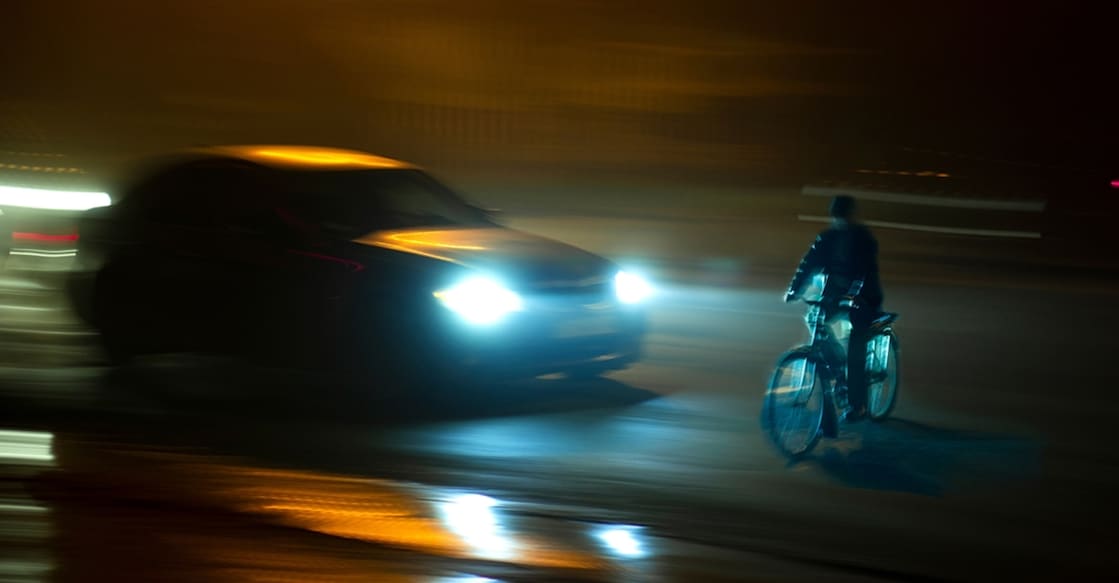Love night drives? One in five crashes after dark proves fatal in Kerala, double the daytime rate

Mail This Article
Kasaragod: Who doesn't enjoy a breezy night drive through empty roads? But the hush of the highway after dark can be fatally deceptive.
A deep dive into Kerala's road accident data between 2018 and 2023 reveals a striking pattern: accidents at night are twice as likely to result in death as those during the day.
Only about 5 per cent of the total accidents in Kerala occur between midnight and 6 am, but they account for a staggering 20 per cent of all fatal crashes. "In other words, one in five accidents during these hours results in death, compared to just one in 10 during the day," said Anish Kumar B, Deputy Director, Department of Economics and Statistics, Thiruvananthapuram.
Anish Kumar, who headed the team that prepared the state's 'Status Report on Road Accidents', says the danger hours begin by 9 pm. Nearly 8 per cent of accidents take place between 9 pm and midnight -- but here too, the fatality rate is higher, with one in seven crashes turning deadly.
In contrast, while accidents are far more frequent during the day, they are less likely to be fatal. Between 6 am and 6 pm, Kerala recorded 1,53,345 accidents from 2018 to 2023. Of which, 12,262 were fatal, that’s a fatality rate of 8 per cent, or one in 13 accidents.
The safest stretch of the day? 9 am to 12 noon, which sees the highest share of accidents (18 per cent) but the lowest fatality rate, with just one in 14 crashes proving fatal. "Heavy traffic, reduced speeds, better visibility, and faster emergency response all contribute to making daytime accidents less deadly," said Anish Kumar.
If you thought fatigue or drowsiness was the biggest threat on late-night drives, think again. From 2018 to 2023, nearly 93 per cent of Kerala’s road accidents were caused by reckless driving, such as speeding and dangerous overtaking. Fatigue, often blamed for night crashes, accounted for just 0.4 per cent, and drunk driving for 0.5 per cent, according to the State Crime Records Bureau. Other causes? Bad weather (1.23 per cent), poor road conditions (0.56 per cent), and vehicles parked unsafely on roads (0.5 per cent). No accidents were reported at unmanned railway crossings during the five years.
December, January, and February consistently recorded the highest number of crashes, possibly due to increased travel during holidays and cooler weather. Monsoon months of June, July, and August were comparatively safer, likely due to reduced mobility and cautious driving in the rains.
District-wise, Ernakulam (15 per cent) reported the highest share of total accidents, but Thiruvananthapuram topped in fatalities (10 per cent to 14 per cent).
Wayanad, Kasaragod and Idukki reported the lowest numbers of accidents.
Two-wheelers dominate Kerala’s accident charts. Between 2018 and 2023, they were involved in 41 per cent of all accidents and accounted for 34.6 per cent of deaths. In comparison, cars and light vehicles accounted for 29.4 per cent of all accidents but were responsible for just 18 per cent of fatalities.
KSRTC buses were involved in only 1.52 per cent of accidents from 2018 to 2023. In contrast, goods and other heavy vehicles were involved in 12 per cent of the accidents in the same period.
Kerala saw fewer accidents and deaths during the pandemic years (2020 and 2021), thanks to lockdowns. But the severity- how often accidents turned fatal- remained nearly the same.
In 2020, 2,979 people died in 27,877 accidents. That's one death for every nine crashes. In 2021, 3,429 lives were lost in 33,296 accidents, about one in every 10.
In the pre-Covid year of 2019, the trend was similar: one person died in every nine road accidents.
Since then, there’s been a gradual but welcome drop: one death in 10 accidents in 2022; one in 12 accidents in 2023 and one death in 13 accidents in 2024 and the first three months of 2025.
"Though the number of accidents rose from around 33,000 in 2021 to nearly 49,000 in 2024, the number of accidents per 1,000 vehicles has held steady at 3.5 since 2022. Pre-COVID, it was 4 per 1,000 vehicles," said Anish Kumar. This downward trend in fatalities suggests that measures such as improved trauma care, stricter law enforcement, enhanced road infrastructure, and changes in traffic behaviour post-COVID may be effective, he said.
Between 2016 and 2023, National Highways in Kerala reported a much higher accident density than state highways: 39 accidents per km were reported on national highways in Kerala; while only 15 accidents per km were reported on state highways. Once the six-lane NH 66 becomes fully operational, this figure is expected to dip significantly, the official said.


